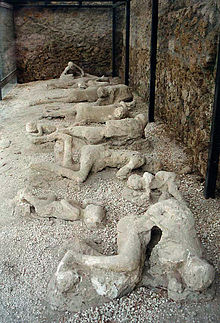 If you are a world traveler and have made a list of World Cultural Heritage sites to visit, you have undoubtedly included a visit to the ancient city of Pompeii on that list. However, new concerns for those who love Pompeii and also for Italian government regarding the up-keeping and preservation of Pompeii have risen. Last month, a former restorer of Pompeii, Marcello Fiori was arrested on corruption charges and there are also five other people under investigation.
If you are a world traveler and have made a list of World Cultural Heritage sites to visit, you have undoubtedly included a visit to the ancient city of Pompeii on that list. However, new concerns for those who love Pompeii and also for Italian government regarding the up-keeping and preservation of Pompeii have risen. Last month, a former restorer of Pompeii, Marcello Fiori was arrested on corruption charges and there are also five other people under investigation.
Italy declared a state of emergency at Pompeii in 2008 putting it under special administration until July 2010 after many historians and archeologists complained about the poor upkeep of the site. The result of the changes was to hire Mr. Fiori and a number of other personnel changes. At that time, The UNESCO mission found many major issues and concerns and concluded that even though a management plan had drawn up, it was not used and rather focusing on the areas of concerns and preservation, funds were diverted to other purposes. Last months, Italian investigators charged Mr. Fiori and the director of restoration, Luigi D’Amora, for awarding irregular contracts to a company called Caccavo which had charged the government and the commission very inflated prices for their work.
In the last five years UNESCO has identified new problems and as it was reported in the Art Newspaper, there are major concerns about lack of maintenance including several areas of deterioration, collapse of columns, inappropriate restoration methods and a general lack of qualified staff.” The fact that restoration projects are outsourced and the quality of the work of the contractors is not being assessed is another major concern. In addition, it has been known for a long time that an efficient drainage system is lacking, leading to water infiltration and excessive moisture that gradually degrades the structural condition of the buildings as well as their decor.
In 2010, UNESCO sent a mission supervised by Christopher Young, the head of world heritage and international policy at English Heritage. He was assisted by two Paris-based specialists representing the International Council on Monuments and Sites: Jean-Pierre Adam, a professor at the Ecole du Louvre, and Alix Barbet, the director of research at the Centre National de la Recherche Scientifique. Their report, which has had virtually no international press coverage, was submitted to UNESCO’s World Heritage Committee in Paris in June 2011. It covers Pompeii and the nearby sites of Herculaneum and Torre Annunziata, on the outskirts of Naples.
The eruption of Vesuvius in 79 AD killed Pompeii’s inhabitants but preserved their buildings. The city was covered with ash, and it was only after its rediscovery in 1748 that excavations began. In 1997, UNESCO designated it a World Heritage Site. Pompeii attracted more than 2.3 million visitors in 2010.















